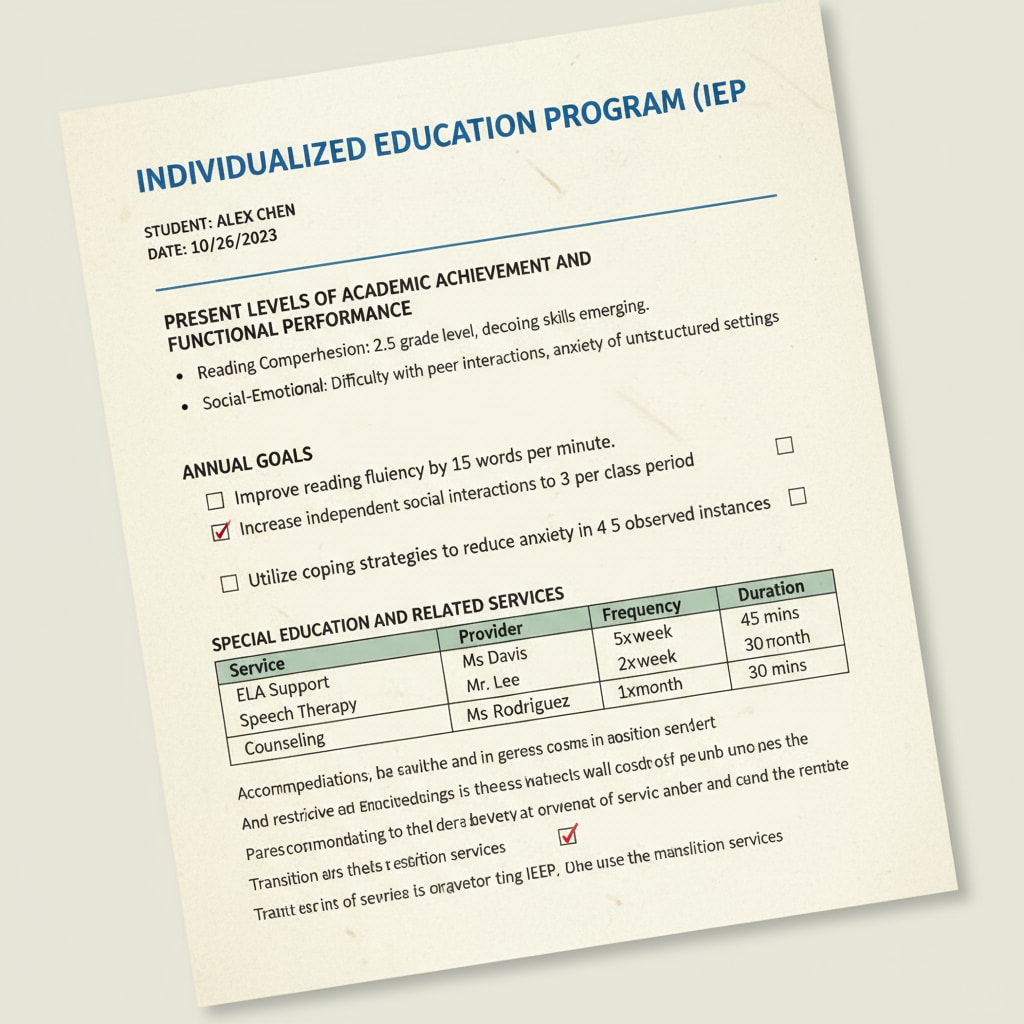Special education, IEP, and comprehension difficulties are issues that often confront special education professionals. The Individualized Education Program (IEP) is a cornerstone in special education, yet many educators, especially teaching assistants, find it hard to fully understand these documents.

This complexity can hinder the effective implementation of individualized education plans for students with special needs.
The Hurdles in IEP Comprehension
One of the main challenges is the jargon-laden language used in IEP documents. Terms like “functional behavioral assessment,” “least restrictive environment,” and “adaptive skills” can be bewildering for those new to the field. For example, a special education assistant fresh out of training may struggle to decipher what exactly is meant by “response to intervention” strategies. As a result, they might misinterpret the goals and objectives set for a student. In addition, the format of IEP documents can vary widely from district to district, adding another layer of confusion. Some are highly structured, while others may seem disjointed, making it difficult to extract key information.

Reasons Behind the Comprehension Struggles
The lack of standardized training is a significant factor. Many special education teaching assistants receive minimal instruction on how to read and interpret IEP documents during their training programs. According to Understood.org, a leading resource for special education information, this gap in training can leave educators ill-prepared to handle the intricacies of IEP documents. Moreover, the fast-paced nature of special education classrooms means that educators often have limited time to thoroughly study these documents. They are constantly juggling multiple responsibilities, from classroom management to providing direct support to students, leaving little room for in-depth analysis of IEPs.
Another reason is the individualized nature of IEPs. Each document is tailored to the unique needs of a particular student, which can make it challenging to establish a general understanding framework. For instance, a student with autism may have very different goals and support requirements compared to a student with a learning disability, and these differences are reflected in their respective IEPs.
Readability guidance: Here, we’ve used short paragraphs to break down the reasons clearly. We’ve also included a link to an external authoritative resource to support our point. Transition words like “moreover” and “for instance” have been used to enhance the flow.
Coping Strategies for Special Educators
Professional development opportunities are crucial. Special education assistants should seek out workshops and online courses specifically focused on IEP understanding. The Council for Exceptional Children (CEC) offers a variety of resources and training programs, as can be seen on their official website. These can provide in-depth knowledge about IEP components, goal setting, and assessment methods. Additionally, forming study groups with colleagues can be beneficial. By discussing and analyzing IEPs together, educators can share insights and clarify any misunderstandings. For example, they can review a sample IEP and discuss how to best implement the strategies outlined in it.
Educators should also develop a systematic approach to reading IEPs. This could involve creating a checklist of key elements to look for, such as student strengths, areas of need, goals, and the services to be provided. Breaking the document down into smaller sections and focusing on one aspect at a time can make it more manageable. Furthermore, building a glossary of IEP terms can help educators quickly refer to and understand the meaning of unfamiliar words.
In conclusion, while special education, IEP, and comprehension difficulties are real challenges for special education professionals, with the right strategies and continuous learning, these hurdles can be overcome. By addressing the root causes and implementing effective coping mechanisms, educators can ensure that they are better equipped to understand and execute IEPs, ultimately benefiting the students they serve.


